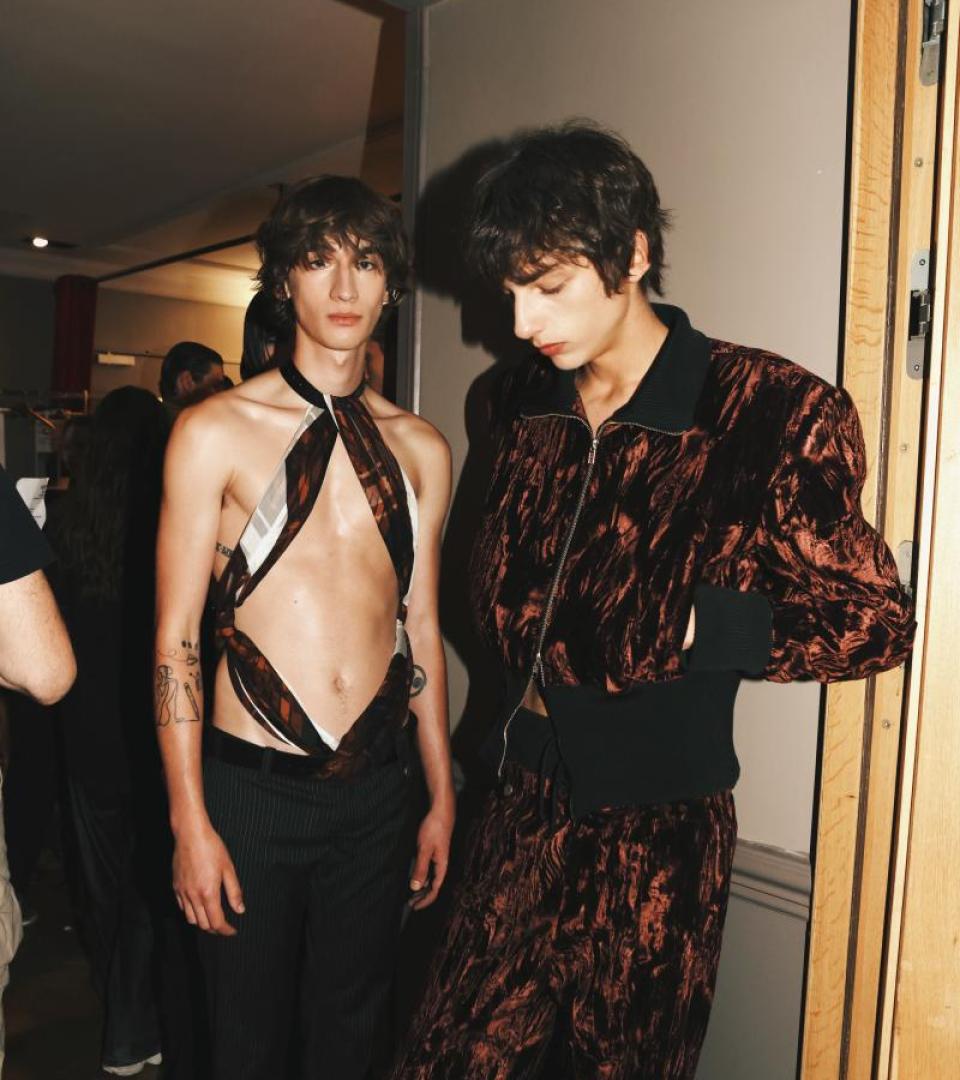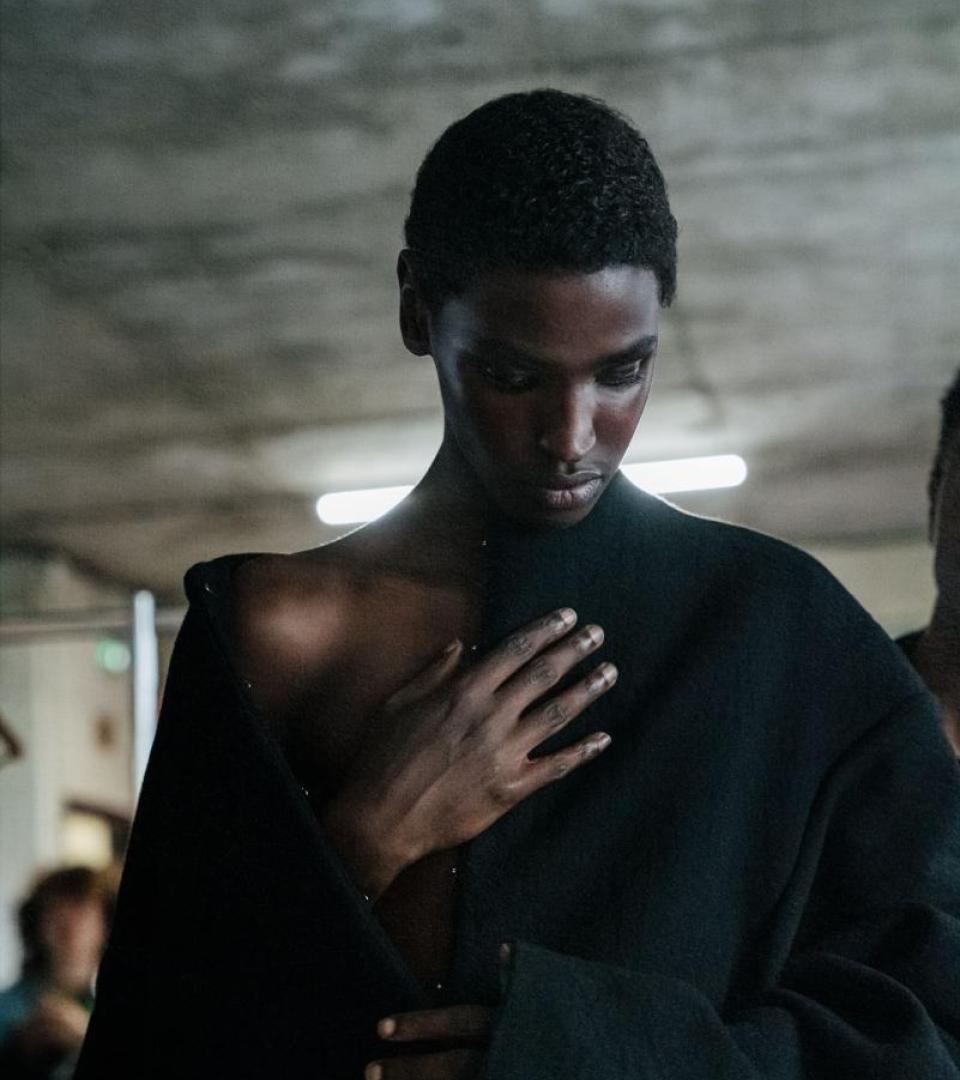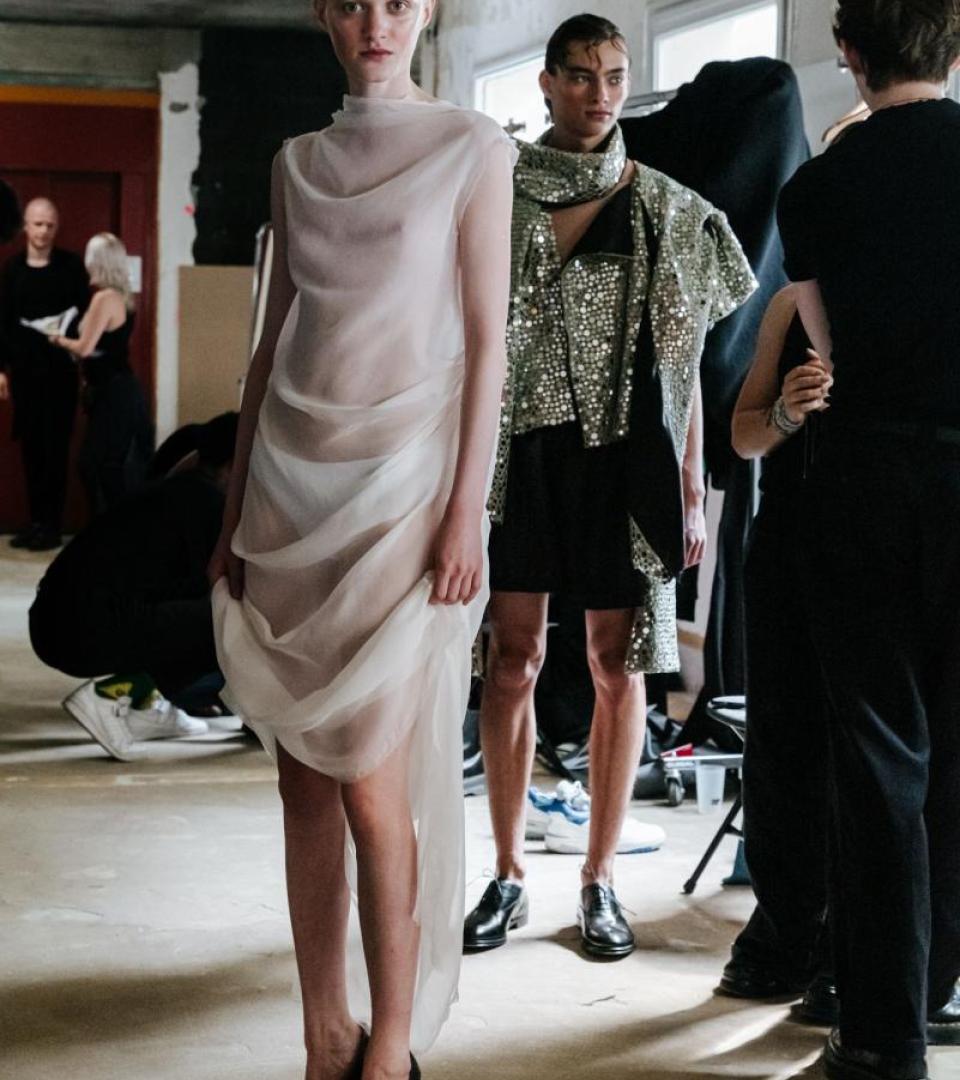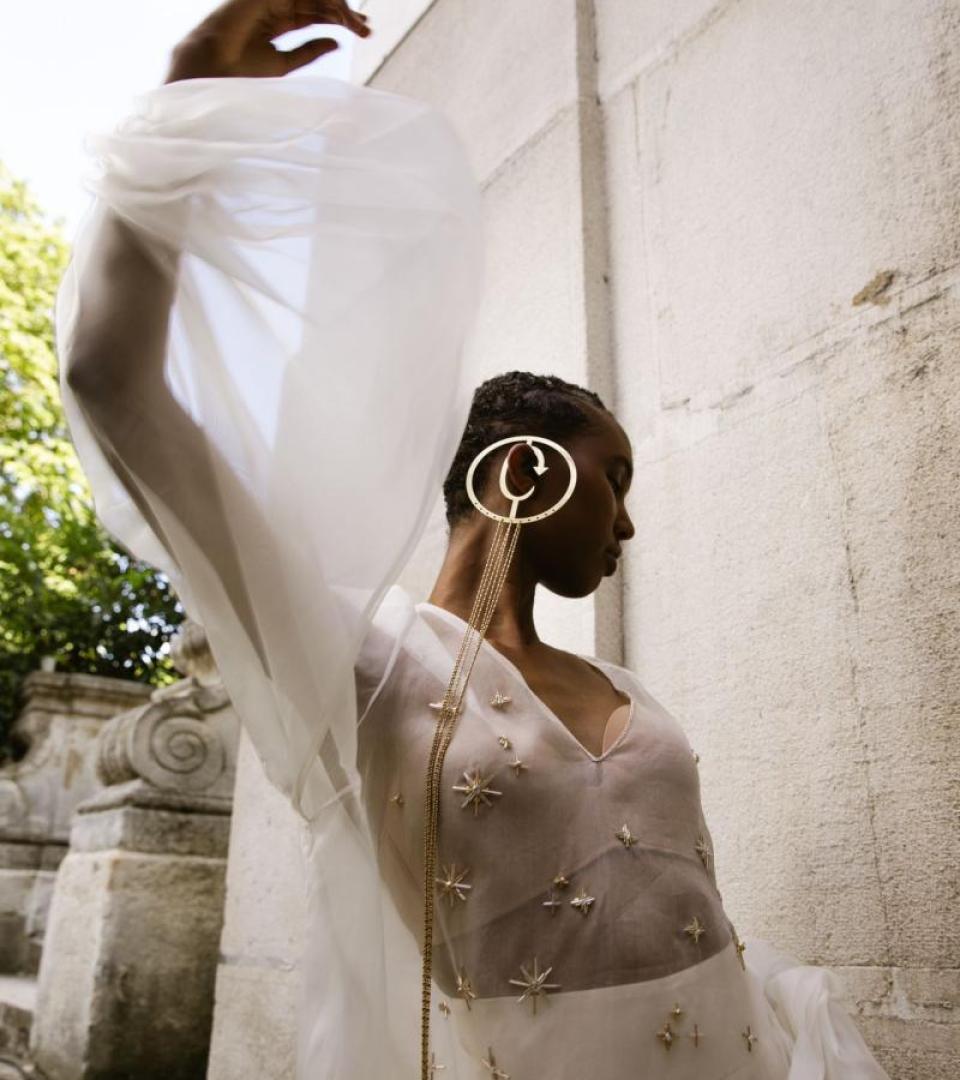GmbH Strips Back
Benjamin Alexander Huseby and Serhat Işik are stripping back their usual vision. For Fall-Winter 2023, the GmbH designers explored form and silhouette instead of issuing grand and transgressive statements about religion, identity, or queerness. Without much fanfare and instead of a high-octane runway show, they held an intimate presentation soundtracked by Berlin duo LABOUR and choreography by Adam Linder. ‘Identity politics fatigue,’ as Huseby put it, was weighing heavily on their mood.
Not that they lost sight of questions surrounding sex, modesty, religion and queerness – omnipresent in the GmbH visual language. Rather, Huseby and Işik shifted their focus to simplification. They zeroed in on their love of the art of pattern making, dressmaking, and the notion of a personal wardrobe, a rigorous exercise for them to reiterate the GmbH value proposition. This fostered a sense of maturity in design, such as tailoring. And whereas in the past, the pair have made women’s looks, this is the first time there is a robust showing of women’s wear that will also go into production.
“When you’re a BIPOC designer in fashion, there’s beauty in that but there’s exhaustion as well. You’re constantly expected to talk about your culture or your trauma,” said Işik, on a video call with Huseby from a hotel room in Milan where both have been moonlighting as the creative directors of Trussardi. He added, “We use our platform as a celebration of our culture and the stories we want to tell, but sometimes it’s absolutely necessary to not talk about it and to meditate on what we really love doing which is, ultimately, making clothes.”
What would you like us to know about the presentation?
Benjamin Alexander Huseby: We’ve always used GmbH as a way to respond to events in the world, which is often very emotional. We GmbH reflects the mood of the moment globally, and there’s a lot of things happening – whether it’s in Turkey or wherever else, there’s this high level of anxiety. What we came to was collaboration instead of doing a conventional runway show, and to work on a performance.
Serhat Işik: We’re still able to communicate and convey emotions and, yes, there’s fashion in the room. Like Benjamin said, we feel quite emotional about how we express ourselves and, in a sense, it feels wrong to do a fashion show right now, but we still wanted to do something to get the audience on board with what we feel.
How did that message inform the clothing?
BAH: In addition to music, there’s usually a narrative or personal story communicated through the garments, but we felt the need to almost step away from that and really focus on form. It makes sense with LABOUR because they program their music in code. It’s about working with form and expressing emotions simply.
SI: We’ve done collections based on our heritage, and that’s still there. It never vanishes or goes away from collection to collection because we don’t give up on our ideas. We speak about things like modesty, religion, sex, growing up queer in those spaces, and it’s like an ongoing study which becomes the GmbH wardrobe.
BAH: It also feels kind of refreshing not to talk about politics because it’s numbing and exhausting sometimes.
You’re launching a full line of women’s wear this season. How does that figure in the GmbH story?
SI: The women’s line made me think about how GmbH started. Our first collection was based on the codes and shapes that are still in collections today. [Over time], we started feeding our wardrobe with more personal stories and [influences from] Middle Eastern and South Asian culture. Doing this women’s wear collection motivated and forced me to look at it from a very clean point of view. It had to make sense before we attach more visual stories to the clothes.
How intentional are you about evolving creatively?
SI: When we started [working with Trussardi] in Italy, it made it much clearer to me what our brand is. It didn’t necessarily change my creative process, but it provided so much clarity. When you become a creative director elsewhere, you start looking at your own brand as a creative director — even though you’ve been that since the start. You look at it through different eyes.
BAH: We needed to compartmentalise when we were working between the two and it was clear to us that we needed to focus on what GmbH really is and crystallise it.
Do you think fashion is capable of enacting change?
BAH: Fashion isn’t capable of dismantling capitalism or fixing the huge inequalities in the world but we were drawn to fashion as a medium primarily because it has this immediacy through beauty and transgression. I feel like we have made real changes, we’ve helped shift certain ideas of beauty to be a lot less Eurocentric, for instance. As a result, with this collection, we thought about whether [the politics of everything] might be a distracting element. The struggles in the world are by no means over but we felt we achieved something to a point where we thought that this season we could focus more on form, silhouette, and shape. We’re deliberately doing that because we want to be discussed in the same way other designers are – those who are mostly white and have the freedom of only talking about the fabrics and silhouettes.
SI: It’s a nice exercise to strip some things away from a minute and see where you end up. In the beginning, we were asked by journalists “are you afraid to be political?” or they would say “their casting looks aggressive” — just because the casting was brown and black models. We’ve ended up at a spot where, if you’re not political or you don’t have a stance, you’re almost getting ‘cancelled’ for that. It’s not a bad thing for us to be quiet right now because we know where our heart is. We know how to talk about [our themes] in a genuine way; there’s no time limit for us as for other people. There’s no expiration date for us in this industry.



